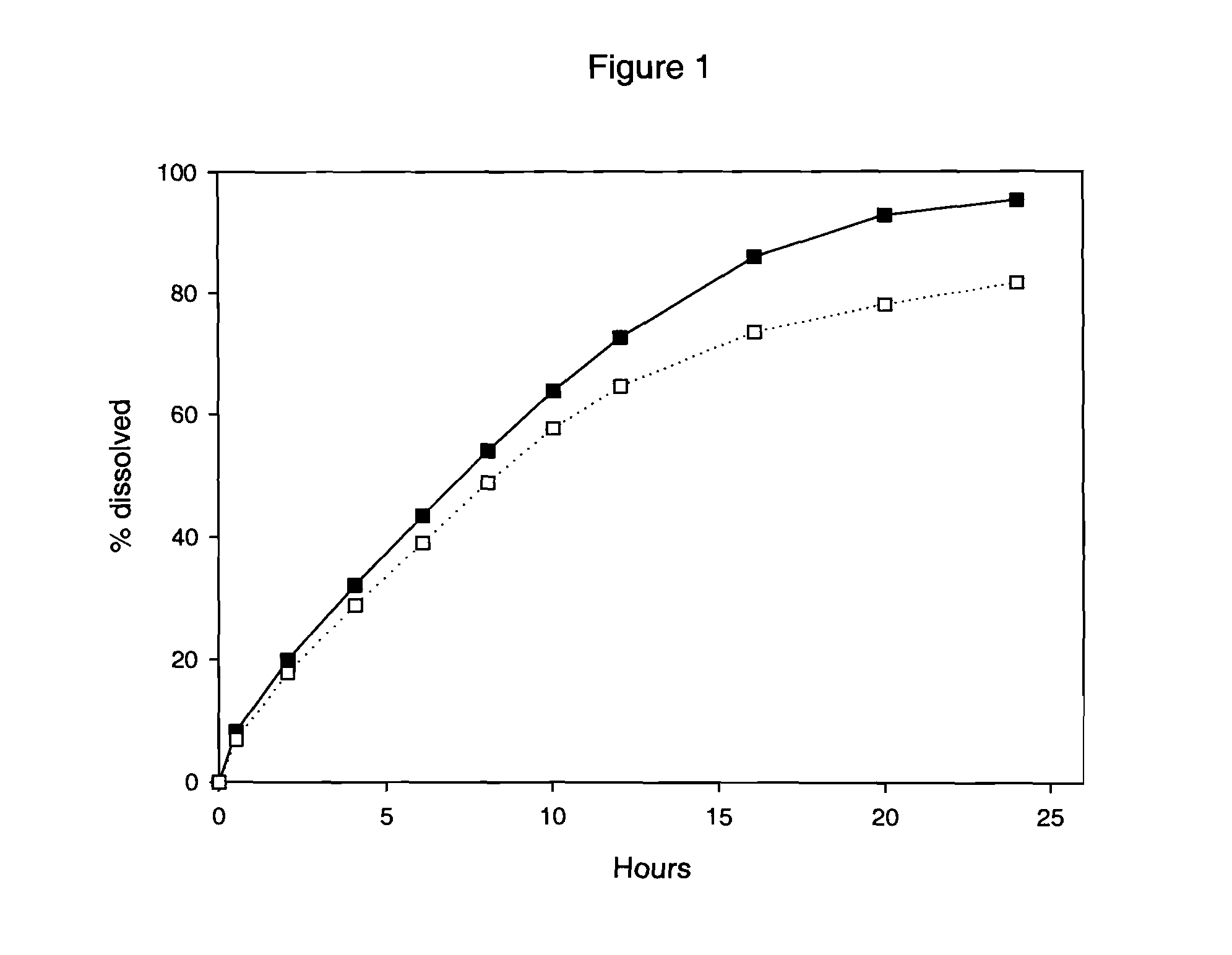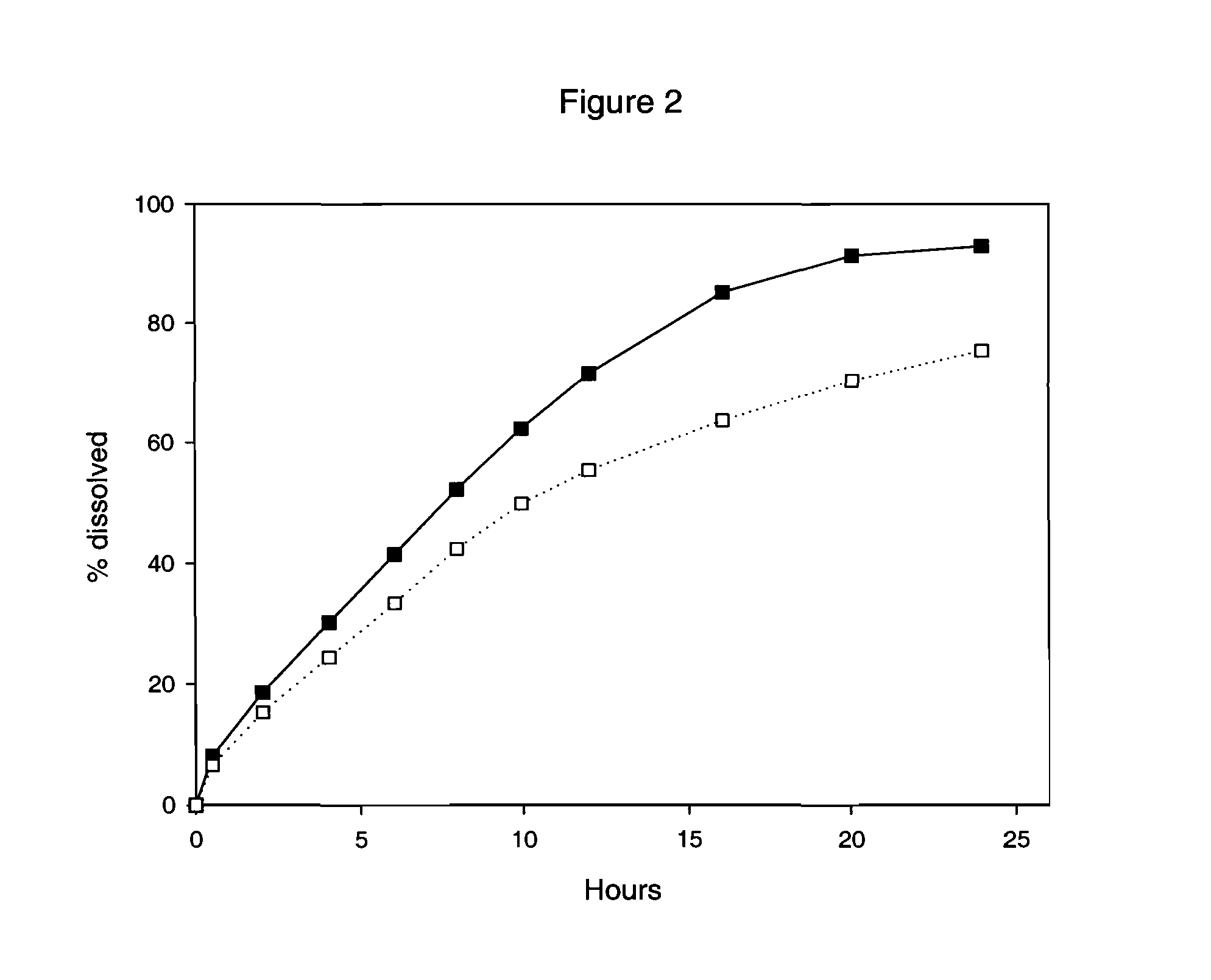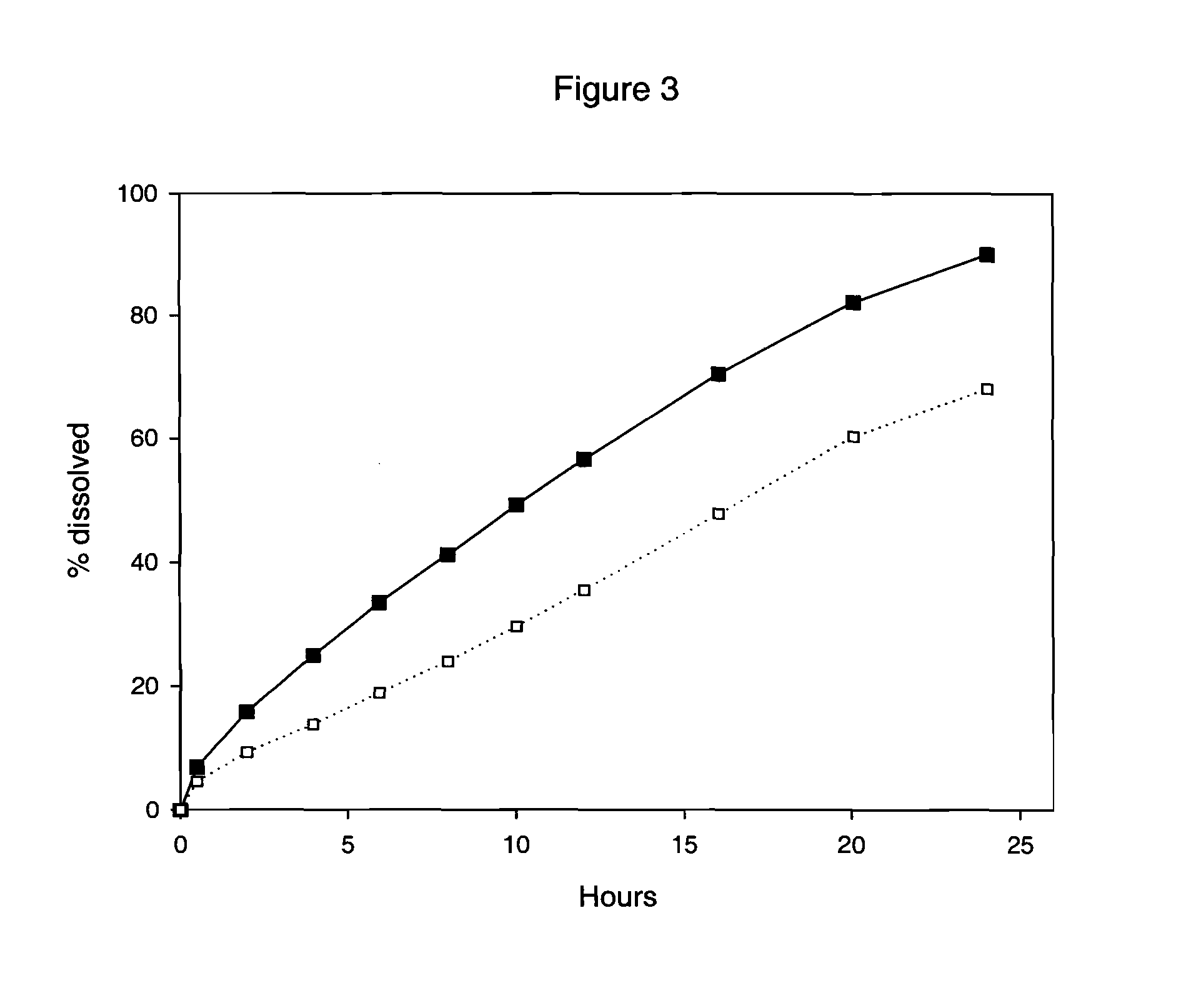Pharmaceutical Multilayer Tablet for Controlled Release of Active Ingredients With Highly pH-Dependent Solubility
a multi-layer tablet and active ingredient technology, applied in the direction of pill delivery, pharmaceutical delivery mechanism, medical preparations, etc., can solve the problems of slow dissolution rate, inability to obtain a controlled release dosage form by incorporating an active ingredient with ph dependent solubility within a matrix, and inability to achieve the method of obtaining a controlled release dosage form in such cases
- Summary
- Abstract
- Description
- Claims
- Application Information
AI Technical Summary
Benefits of technology
Problems solved by technology
Method used
Image
Examples
example 1
Granulate Comprising Drug 1 and Hydroxypropylmethylcellulose
[0095] A granulate A was prepared from the following mixture (except magnesium stearate and Aerosil), by aqueous granulation using a Hobart mixer-granulator. The granulate was then dried in an oven at 50° C., calibrated to 0.8 mm, then lubricated by mixing in the remaining constituents.
Drug 111.6%Hydroxypropylmethylcellulose (Methocel ® K100M)10.0%Mannitol 6020.0%Microcrystalline cellulose (Avicel ® PH101)54.0%Povidone K29 / 323.2%Colloidal silicon dioxide (Aerosil ® 200)0.2%Magnesium stearate1.0%100.0%
example 2
Three-Layer Tablet with Succinic Acid in the Outer Layers
[0096] A granulate B was prepared comprising succinic acid, as follows. The method was the same as for example 1.
Hydroxypropylmethylcellulose (Methocel ® K100M)35.0%Lactose 150M24.5%Microcrystalline cellulose (Avicel ® PH101)13.9%Succinic acid20.0%Povidone K29 / 325.0%Iron oxide (yellow)0.4%Colloidal silicon dioxide (Aerosil ® 200)0.2%Magnesium stearate1.0%100.0%
[0097] Three-layer tablets were manufactured with the granulate A from example 1 as the inner layer, dosed at 11.6 mg of Drug 1 and the above granulate B comprising acid for the two outer layers. Each layer contained 100 mg of granulate. The compression was carried out using an alternating tableting machine Frogerais AO, using size 8R16 punches. Each layer (100 mg for each layer) was filled manually. The in vitro dissolution was then tested at pH 2 and pH 6.8, using the following method.
[0098] The apparatus described in the European Pharmacopoeia was used. Agitation ...
example 3
Three-Layer Tablet with Tartaric Acid in the Outer Layers
[0099] A granulate C was prepared in exactly the same way as the granulate B of example 2, and with the same composition except tartaric acid was used instead of succinic acid. Three-layer tablets using granulate A comprising Drug 1 for the inner layer and granulate C (with tartaric acid) for the outer layers were prepared as in example 2. Their in vitro dissolution was then tested at pH 2 and pH 6.8, using the same dissolution method as in example 2.
[0100] Results are shown in FIG. 2.
PUM
 Login to View More
Login to View More Abstract
Description
Claims
Application Information
 Login to View More
Login to View More - R&D
- Intellectual Property
- Life Sciences
- Materials
- Tech Scout
- Unparalleled Data Quality
- Higher Quality Content
- 60% Fewer Hallucinations
Browse by: Latest US Patents, China's latest patents, Technical Efficacy Thesaurus, Application Domain, Technology Topic, Popular Technical Reports.
© 2025 PatSnap. All rights reserved.Legal|Privacy policy|Modern Slavery Act Transparency Statement|Sitemap|About US| Contact US: help@patsnap.com



